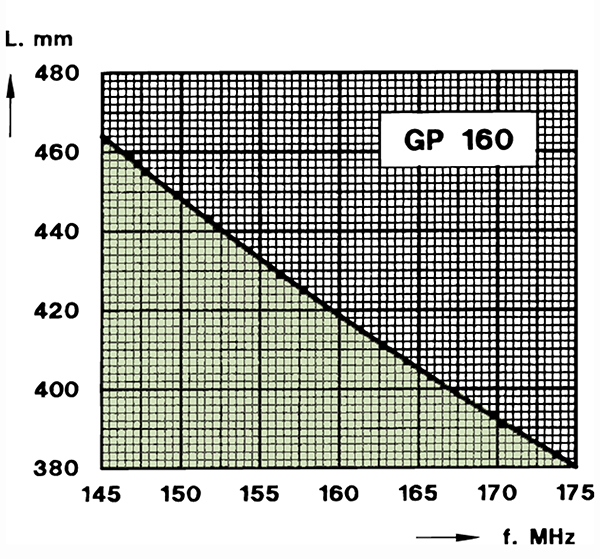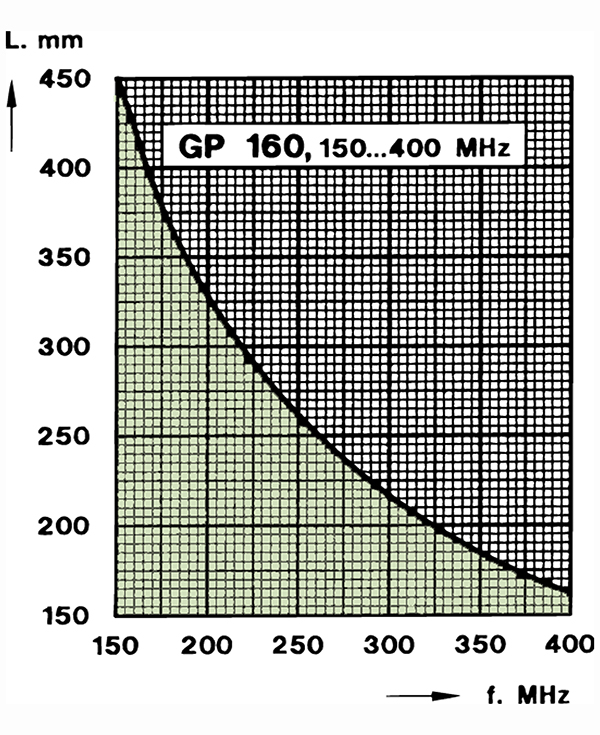- GP 160 is a glass fibre ground-plane antenna of the triple-leg type.
- The antenna is tunable (by cutting) within its main frequency band: 145 - 175 MHz, but is further applicable up to 400 MHz.
- The cutting diagrams below indicate the length of the radiator and the radials corresponding to a specific frequency. It is recommended to use the curves as a guide and fine-tune using an VSWR-meter.
- The antenna comprises a GP-head made of chromed brass, one glassfiber radiator and three glass fibre radials.
- GP 160 is made of first-class materials and will endure “wear and tear” for years – no maintenance required.
- LW-SS-1" mounting bracket and GP Adaptor is available as accessories.
Ground Plane AntennasGP 160
¼ λ Glass fibre Ground-Plane Antenna for the 160 MHz Band
Description
Specifications
| Electrical | ||
|---|---|---|
|
||
|
||
|
||
|
||
|
||
|
||
|
||
|
||
|
||
|
||
|
||
| Mechanical | ||
|---|---|---|
|
||
|
||
|
||
|
||
|
||
|
||
|
||
|
||
|
||
|
||
| Environmental | ||
|---|---|---|
|
||
Ordering Designations
| Model | Product No. | |
|---|---|---|
| GP 160 | 100000104 | |
| GP 160/42 mm | 100000105 | |
| Accessories | ||
| LW-SS-1" | 110000394 | |
| GP Adaptor | 100000679 | |
Please Note
The GP 160 can be delivered with a GP-head for mounting on 42 mm dia. mast tube (standard is 38 mm) when ordering as option GP 160/42 mm.
The radiator is measured from its free end to the bottom of the black insulator, while the radials are measured from their free ends to where they meet the GP-head.







